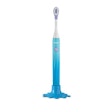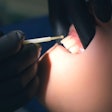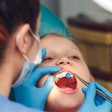
Do a Google search for "amalgam" and "danger" and you get over 460,000 hits. Small surprise. Health advocates rail against the danger of "silver" mercury (amalgam) fillings. Some even claim that removing existing amalgam restorations will radically improve patients' health. Meanwhile, amalgam boosters staunchly defend the alloy.
But in the decades that amalgam has been on trial, neither the prosecution nor the defense has found enough evidence to win its case. That's why two long-term studies reported last year in the Journal of the American Medical Association (JAMA), attracted wide-spread attention: both suggested that mercury fillings don't affect children's mental or physical health.
Predictably, amalgam defenders such as the American Dental Association hailed these results. And just as predictably, amalgam critics rushed to poke holes. Now both studies are back in the news, with new articles--including one in the September issue of the Journal of the American Dental Association (JADA)--in which the researchers address some of the major criticisms. The bottom line: the results still stand.
“There appear to be no detectable adverse neuropsychological outcomes in children that are attributable to the use of amalgam dental restorations,” concluded the researchers of The New England Children’s Amalgam Trial in the most recent article.
Researchers from both studies also gave the pro amalgam camp further ammo by publishing evidence that amalgam fillings last longer than composite fillings.
Exposed, yes. But harmed?
Dentists have used amalgam to repair teeth for 150 years. But amalgam contains 40% to 50% mercury by weight, and it emits minute amounts of mercury vapor under the pressure of ordinary chewing.
Both 2006 studies compared the health of a group of children with amalgam fillings to the health of a group with composite fillings over several years.
For the New England Children’s Amalgam Trial, researchers at Harvard University, four other U.S. institutions, and Goteberg University in Sweden, randomly divided 534 Massachusetts children into two groups of 267 each. The children were 6 to 10 years old at the start of the study, and had at least two caries in posterior teeth. Over the next five years, the children had a mean of 15 restorations.
After five years of getting their cavities filled, the children who received amalgam restorations had nearly 50% more mercury in their urine as compared to the group getting composite fillings (0.9 µg/g vs. 0.6 µg/g). But based on the results of a battery of neurocognitive tests evaluating intelligence, memory, and visuo-motor skills, both groups did equally well. Nor did the amalgam children’s kidneys appear to be affected by the mercury. There was no significant difference in urinary albumin between the amalgam kids and the composite kids over the five years.
Researchers for the Casa Pia Study of the Health Effects of Dental Amalgams in Children from the University of Washington, Seattle; the Battelle Centers for Public Health Research and Evaluation in Seattle; and the Lisbon-based Universidade de Lisboa and the Universidade Catolica Portuguesa; randomly divided 507 Lisbon children into a group of 253 who received amalgam restorations and a group of 254 who received composite restorations. The children ranged in age from 8 to 10 years and each had at least one carious lesion on a posterior tooth.
After seven years, the children had a mean of 20 restorations. As in the New England study, the amalgam children had a higher creatinine-adjusted level of mercury in their urine after two years (3.2 µg/g vs 2.7 µg/g), but that difference shrunk between the two groups over the seven years. And there were no statistically significant differences in memory, attention, and visual motor function or nerve conduction velocities at any point during the seven years.
Both groups of researchers argue that their studies should make dentists more comfortable using amalgam. But in an editorial accompanying the two JAMA reports, Herbert L. Needleman, M.D., a Pittsburgh University pediatric psychiatrist pointed out several shortcomings:
- The damage from mercury exposure could accumulate over decades. The longest-term follow-up in these two studies was seven years.
- The studies were not large enough to detect subtle, but potentially important, brain damage.
- There is evidence that genetic differences make a portion of the population highly vulnerable to mercury. Neither study focused on the effects in patients with these genetic differences.
- The studies didn’t examine whether those children with the most mercury in their urine experienced neurological effects; it simply lumped all the children together.
Upon further inspection…
In response, the New England researchers further analyzed their data and published two follow-up reports, the first in the March 2007 Journal of Environmental Health Perspectives and the second in JADA this month. Both articles compared the amount of mercury in children’s hair and urine and the number of restorations per child to the detailed children’s scores on an extensive battery of neurological tests.
Once again, the New England researchers said the results looked good for amalgam. Even when they ranked the children in order of least-to-most mercury exposure, they found no evidence of neurological damage.
And zooming in on the minutia of the test scores didn't reveal any problems, either. In only two out of 32 of these tests did the researchers find significant differences between the amalgam kids and the composite kids (the Number Letter Memory subtest of the Wide Range Assessment of Memory and Learning and the 4-year change in the time required to complete Part B of the Trail-Making Test). And these correlations didn’t implicate amalgam. In fact, the children with amalgam fillings scored higher than the children with composite fillings on both tests.
The researchers also did not find any subgroup of children who suffered any effects from mercury exposure. They admitted that their study was too small and short term to completely rule out the possibility that amalgam fillings cause brain damage, but they argued that dentists can be reasonably confident in using the material until further research proves otherwise.
In fact, in a separate June 2007 article in JADA, the New England researchers said there’s a good reason to prefer amalgam--it lasts longer than composite fillings. In primary teeth, 3.0 percent of composite fillings needed replacement due to caries vs 0.5 percent of amalgam fillings over the five years.
The Casa Pia researchers reported similar findings about the durability of amalgam in the same issue of JADA. In short, say the Casa Pia authors, "amalgam restorations performed better than composite restorations."
Funding Facts:Both studies received funding from the National Institutes of Health. The New England study also got money from the New England Research Institutes. Only two researchers--from the Lisbon studies--made financial disclosures. One received a small grant from an amalgam restorations company to travel to Washington state. The other consults for a company that makes both composite and amalgam restorations.
Sources:
Bellinger, C et al., "Dental Amalgam Restorations and Children’s Neuropsychological Function: The New England Children’s Amalgam Trial" Environmental Health Perspectives 115:440–446, March 2007
Bellinger, C et al., "Neuropsychological and Renal Effects of Dental Amalgam in Children: A Randomized Clinical Trial" Journal of the American Medical Association, Vol 295, No. 15, April 19, 2006.
Bellinger, C. et al., "A dose-effect analysis of children’s exposure to dental amalgam and neuropsychological function: The New England Children’s Amalgam Trial" Journal of the American Dental Association, 138(9):1210-6, Sept 2007
Bernardo, M. et al., "Survival and Reasons for Failure of Amalgam Versus Composite Posterior Restorations Placed in a Randomized Clinical Trial," Journal of the American Dental Association,138(6):775-8, June 2007
Rouen, T. et al., "Neurobehavioral Effects of Dental Amalgam in Children: A Randomized Clinical Trial," JAMA, Vol 295, No. 15 April 19, 2006



















